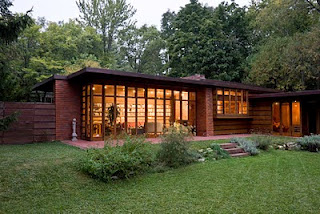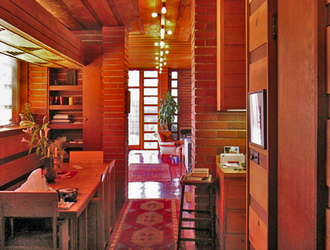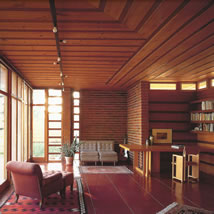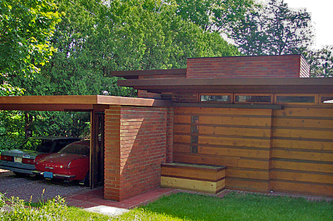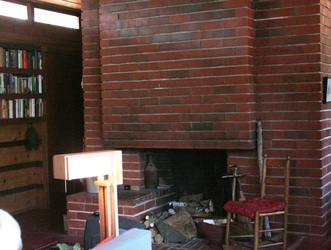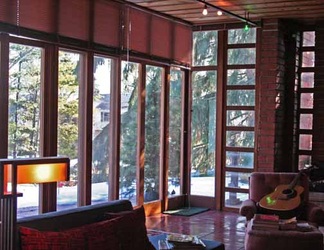Usonian Reformation
|
Wright remained committed to creating moderately priced housing. In 1936, he built a $5,000 home for the Jacobs that incorporated his own cost-saving innovations like radiant floor heating and a carport. For greater spaciousness he added doors opening from most rooms onto the garden. This reformed design, which Wright called "Usonian", maintained the simplicity, horizontal lines, walls of windows, and "interpenetrating" rooms of Wright's Prairie style.
|
"The space in the Jacobs house is not static. Its
boundaries are complex and ambiguous. There is always an area of overlap - a part of the space for sitting is also a part of the dining area or even kitchen, lobby, or terrace. Corner glazing, with glass mitered directly to glass, reinforces this and 'sets the corner free or open for whatever distance you choose'. This continuity was essentially what Wright meant by 'breaking the box'. Seargeant, p.28 |
Jacobs House Internal and External Views
The Jacobs House reveals Usonian details:
The Jacobs House reveals Usonian details:
|
"-Dominant horizontal lines
-Flat roofs with large overhangs -Standardized natural materials |
-Zoned plans
-Open living areas -Adjacent cooking-dining areas |
-Integrated windows
-Carports -Integral gravity heating" (Lind, p. 15) |
To Wright, "the open [floor] plan and natural materials were expressions of democracy." (Eric Lloyd Wright, Personal Interview) The corner window equaled freedom.
|
"The corner window is indicative of an idea, conceived early in my work, that the box was a Fascist symbol, and the architecture of freedom and democracy needed something beside the box. So I started out to destroy the box as a building. Well, the corner-window came in as all the comprehension that ever was given to that act of the destruction of the box. The light came in where it had never come before, vision went out, and you had screens intstead of walls. . . . " Interview with Hugh Downs, 1953
|
The Usonian design was ahead of its time, and the Federal Housing Administration would not approve government financing for the Jacobs because of the flat roof. Ultimately, Wright's design would become popular through reform by others.
